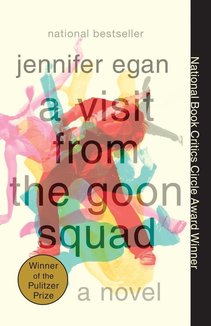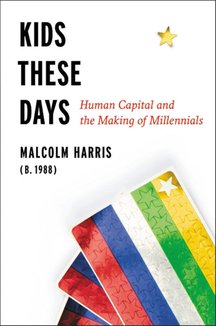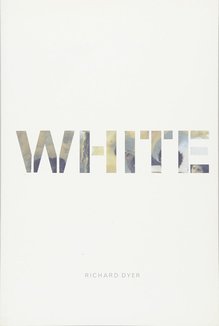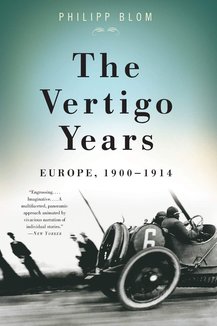Recommended Books

A Visit from the Goon Squad: Pulitzer Prize Winner
Author:
Jennifer Egan
ISBN 13:
978-0307477477
NATIONAL BESTSELLER • NATIONAL BOOK CRITICS CIRCLE WINNER • With music pulsing on every page, this startling, exhilarating novel of self-destruction and redemption “features characters about whom you come to care deeply as you watch them doing things they shouldn't, acting gloriously, infuriatingly human” ( The Chicago Tribune ) . One of the New York Times ’s 100 Best Books of the 21st Century • One of The Atlantic ’s Great American Novels of the Past 100 Years Bennie is an aging former punk rocker and record executive. Sasha is the passionate, troubled young woman he employs. Here Jennifer Egan brilliantly reveals their pasts, along with the inner lives of a host of other characters whose paths intersect with theirs. “Pitch perfect.... Darkly, rippingly funny.... Egan possesses a satirist’s eye and a romance novelist’s heart.” — The New York Times Book Review

Kids These Days: The Making of Millennials
Author:
Malcolm Harris
ISBN 13:
978-0316510851
In Kids These Days , early Wall Street occupier Malcolm Harris gets real about why the Millennial generation has been wrongly stereotyped, and dares us to confront and take charge of the consequences now that we are grown up. Millennials have been stereotyped as lazy, entitled, narcissistic, and immature. We've gotten so used to sloppy generational analysis filled with dumb clichés about young people that we've lost sight of what really unites Millennials. Namely: We are the most educated and hardworking generation in American history. We poured historic and insane amounts of time and money into preparing ourselves for the 21st-century labor market. We have been taught to consider working for free (homework, internships) a privilege for our own benefit. We are poorer, more medicated, and more precariously employed than our parents, grandparents, even our great grandparents, with less of a social safety net to boot. Kids These Days is about why. In brilliant, crackling prose, early Wall Street occupier Malcolm Harris gets mercilessly real about our maligned birth cohort. Examining trends like runaway student debt, the rise of the intern, mass incarceration, social media, and more, Harris gives us a portrait of what it means to be young in America today that will wake you up and piss you off. Millennials were the first generation raised explicitly as investments, Harris argues, and in Kids These Days he dares us to confront and take charge of the consequences now that we are grown up.

White: Essays on Race and Culture
Author:
Richard Dyer
ISBN 13:
978-0415095372
White people are not literally or symbolically white; nor are they uniquely virtuous and pure. Racial imagery and racial representation are central to the organisation of the contemporary world but, while there are many studies of images of black and Asian people, whiteness is an invisible racial position. At the level of racial representation, whites are not of a certain race. They are just the human race, a 'colour' against which other ethnicities are always examined. In White , Richard Dyer looks beyond the apparent unremarkability of whiteness and argues for the importance of analysing images of white people. Dyer traces the representation of whiteness by whites in Western visual culture, focusing on the mass media of photography, advertising, fine art, cinema and television. Dyer examines the representation of whiteness and the white body in the contexts of Christianity, 'race' and colonialism. In a series of absorbing case studies, he discusses the representations of whiteness in muscle-man action cinema, from Italian 'peplum' movies to the Tarzan and Rambo series; shows the construction of whiteness in photography and cinema in the lighting of white and black faces, and analyses the representation of white women in end-of-empire fictions such as The Jewel in the Crown , and traces the disturbing association of whiteness with death, in vampire narratives and dystopian films such as Blade Runner and the Aliens trilogy.

The Vertigo Years: Europe, 1900-1914
Author:
Philipp Blom
ISBN 13:
978-0465020294
Europe, 1900-1914: a world adrift, a pulsating era of creativity and contradictions. The major topics of the day: terrorism, globalization, immigration, consumerism, the collapse of moral values, and the rivalry of superpowers. The twentieth century was not born in the trenches of the Somme or Passchendaele -- but rather in the fifteen vertiginous years preceding World War I. In this short span of time, a new world order was emerging in ultimately tragic contradiction to the old. These were the years in which the political and personal repercussions of the Industrial Revolution were felt worldwide: Cities grew like never before as people fled the countryside and their traditional identities; science created new possibilities as well as nightmares; education changed the outlook of millions of people; mass-produced items transformed daily life; industrial laborers demanded a share of political power; and women sought to change their place in society -- as well as the very fabric of sexual relations. From the tremendous hope for a new century embodied in the 1900 World's Fair in Paris to the shattering assassination of a Habsburg archduke in Sarajevo in 1914, historian Philipp Blom chronicles this extraordinary epoch year by year. Prime Ministers and peasants, anarchists and actresses, scientists and psychopaths intermingle on the stage of a new century in this portrait of an opulent, unstable age on the brink of disaster. Beautifully written and replete with deftly told anecdotes, The Vertigo Years brings the wonders, horrors, and fears of the early twentieth century vividly to life.